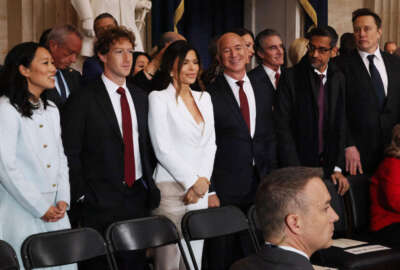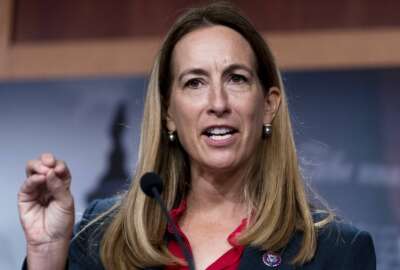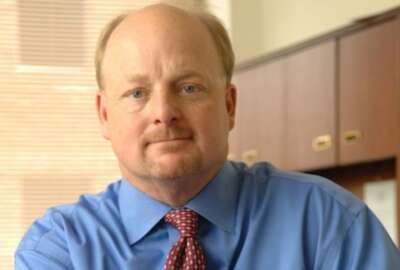New TSA Administrator plans for success
As the Administrator for the Transportation Security Administration, John S. Pistole begins his tenure with the agency, he talks with Federal News Radio about his...
wfedstaff | June 3, 2015 12:43 pm
By Suzanne Kubota
Senior Internet Editor
FederalNewsRadio.com
John Pistole has been the helm of the Transportation Security Administration since July.
He walked into an agency embroiled with battles over collective bargaining rights and over the role body scanners should play in airports.
He told Federal News Radio his priorities could be found in the name of the agency:
Transportation – “Strengthen TSA’s relationship with stakeholders and the travelling public”
Security – “Improve TSA’s counterterrorism focus through intelligence and cutting edge technology”
Administration – “Support the TSA workforce”
Pistole said he plans to visit airports and other transportation facilities, feedback from colleagues across the transportation security community and to hear from TSA staff.
“The TSA, without a confirmed administrator in the past 18 months,” said Pistole, gives him an opportunity as the new Administrator to reach out and meet with both stakeholders and employees. “I’m doing a series of townhalls around the country with TSA employees to hear what their concerns are, what their issues (are), what’s working well for them and then what barriers are there to them doing their job to make the TSA a great place to work.”
Collective Bargaining
Pistole said he’s working on doing an assessment “of the pros and cons of collective bargaining as it may impact the men and women of TSA” and is taking the opportunity to get input from workers. “At some point I will then make a decision or recommendation, depending on how that goes, and then we’ll move forward from there.”
Pistole acknowledged there are many no-win decisions ahead. No matter what decision he makes, for example, with collective bargaining or about security will disappoint workers or the travelling public.
It’s a politically sensitive position because some of the decisions I make, or somebody in my position, may not be popular with people from the standpoint of providing security, but is important in my judgement based on my background and experience of what needs to be done to focus on a counterterrorism mission that TSA was created for.
Airport Scanners
Pistole said he’s also balancing security against privacy when it comes to using advanced imaging technology. “What I want to make sure we are doing,” said Pistole, “is using the latest technology to identify and disrupt potential threats, and that we’re not using that technology to address yesterday’s threats.”
While TSA, Pistole told the Federal Drive, is using what’s considered cutting edge now, he said he’s already looking at what the next generation of technology will bring. He said he is aware, and sensitive to, people who have privacy concerns about the scanners.
He explained that the current process of screening passengers helps. The TSA screener who is with the person being screened never sees the image, said Pistole, while the TSO, who sees the image never sees the person. Both, while the machines that TSA uses at airports “do not have the software capability when we acquire them to retain those images.”
Machines used in TSA labs can, and do, retain images for testing purposes, but not those used with the travelling public.
Pistole said he’s looking at automated target recognition (ATR) which would “get away from the image altogether”. Instead of a human form, the ATR shows a stick figure with areas of threats displayed. In addition to not being quite so personal, another advantage of using the system, said Pistole, is the upgrade would “basically be a software modification” to machines TSA already has.
Information Sharing
The bottom line, said Pistole, is that to achieve his goals for the TSA and for the TSA to achieve its mission, is to talk to and with each element.
Information sharing is the bedrock of our effective mission in terms of being able to hear from stakeholders, hear from those who are effected by our policies and procedures, our rules and regulations, and then to make sure that we are informing them in the best possible way of okay here’s the reason we’re doing things.”
This approach can be seen, said Pistole, in the TSA’s Why Campaign which answers questions like “why do I have to take off my shoes?”, “why can’t I carry on more than a few ounces of fluid?” or “why do I have to take my laptop out of the bag?”
“There may seem to be some unpredictability about the way we do things,” Pistole explained, “and that’s a good thing on the one hand because we don’t want to become predictable to terrorists. So that’s a big part of it. And just open, frequent communication with all the stakeholders is something that I think is just paramount to our success.”
Copyright © 2025 Federal News Network. All rights reserved. This website is not intended for users located within the European Economic Area.





